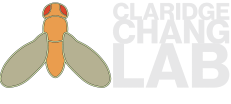A few notes on typography for science communications. For an excellent course in typography, read Butterick's Practical Typography. Butterick's book is useful to learn general typography, especially this short list.
In specific terms, many scientists work in Google Docs and slideshows. To set type in these apps, I recommend some professional-quality typefaces that are (1) free with an open SIL license, (2) available both in GDocs and by download for use in desktop apps, and (3) has Greek letters and other symbols needed for biomedical research communications. Some of the best of these are:
Before the days of corporate-sponsored high-quality open-license free typefaces, these would have each cost about $500 to license.
One of the services provided by journal publishers is to typeset a paper nicely, to make it attractive and readable. However, with the rise of preprints and publishing to the web, publishing is changing, and more scientists need or want to typeset their own writing. Typography will improve as we move away from PDFs and start to embrace programmatic typesetting, such as eLife's Lens software, which presents an xml file in a side-by-side format with hyperlinks between Figure tags in the body and the Figures themselves.
In specific terms, many scientists work in Google Docs and slideshows. To set type in these apps, I recommend some professional-quality typefaces that are (1) free with an open SIL license, (2) available both in GDocs and by download for use in desktop apps, and (3) has Greek letters and other symbols needed for biomedical research communications. Some of the best of these are:
- IBM Plex Sans. Maybe the most versatile, works well for headings, text body, slides. Has a lot of weights to separate elements. There is a mono-spaced version for tables of numbers.
- Fira Sans. Also very versatile for all purposes. Great in slides, it has a bit more flair than Plex. Also a lot of weights, and a Mono version.
- Source Serif Pro. As a serif typeface Source Serif is a strong option for text body. I think it looks nice with Fira for headings in a document. (In case you sometimes write documents in Chinese, Source Serif even has a CJK version called Source Han Serif.)
- Inter. Especially good for labeling Figures, since it has that neutral, generic interface-font appearance. However, this strength makes it weaker for text body. Could also be paired for headings, eg in combination with Source Serif.
- STIX is a workhorse typeface commissioned by big players in the science publishing industry, it has pretty much every special scientific symbol you could ever possibly need. This would be a great option to set mathematics, as it has symbolic libraries specifically designed for that purpose.
- Brill was designed for an ancient academic publishing house (also called Brill), and also has a huge glyph set. I like that it has an old-school look, would be ideal for typesetting a doctoral thesis.
Before the days of corporate-sponsored high-quality open-license free typefaces, these would have each cost about $500 to license.
One of the services provided by journal publishers is to typeset a paper nicely, to make it attractive and readable. However, with the rise of preprints and publishing to the web, publishing is changing, and more scientists need or want to typeset their own writing. Typography will improve as we move away from PDFs and start to embrace programmatic typesetting, such as eLife's Lens software, which presents an xml file in a side-by-side format with hyperlinks between Figure tags in the body and the Figures themselves.

 RSS Feed
RSS Feed